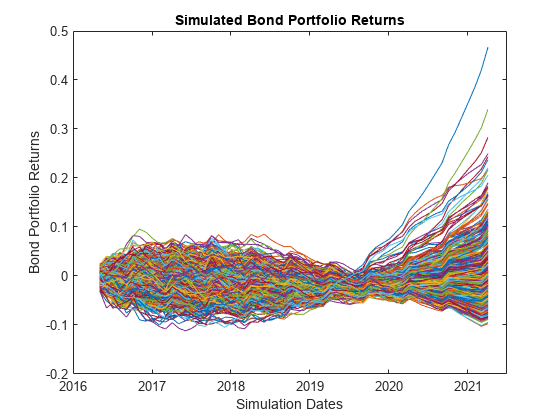HullWhite1F
Create Hull-White one-factor model
Description
The Hull-White one-factor model is specified using the zero curve, alpha, and sigma parameters.
Specifically, the HullWhite1F model is defined using the following equation:
where
dr is the change in the short-term interest rate over a small interval.
r is the short-term interest rate.
Θ(t) is a function of time determining the average direction in which r moves, chosen such that movements in r are consistent with today's zero coupon yield curve.
α is the mean reversion rate.
dt is a small change in time.
σ is the annual standard deviation of the short rate.
W is the Brownian motion.
Creation
Description
HW1F = HullWhite1F(ZeroCurve,Alpha,Sigma)HullWhite1F (HW1F) object using the
required arguments to set the Properties.
Input Arguments
Output Arguments
Properties
Object Functions
simTermStructs | Simulate term structures for Hull-White one-factor model |
Examples
More About
References
[1] Brigo, D. and F. Mercurio. Interest Rate Models - Theory and Practice. Springer Finance, 2006.
[2] Hull, J. Options, Futures, and Other Derivatives. Prentice-Hall, 2011.
Version History
Introduced in R2013a

